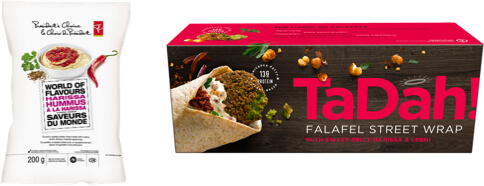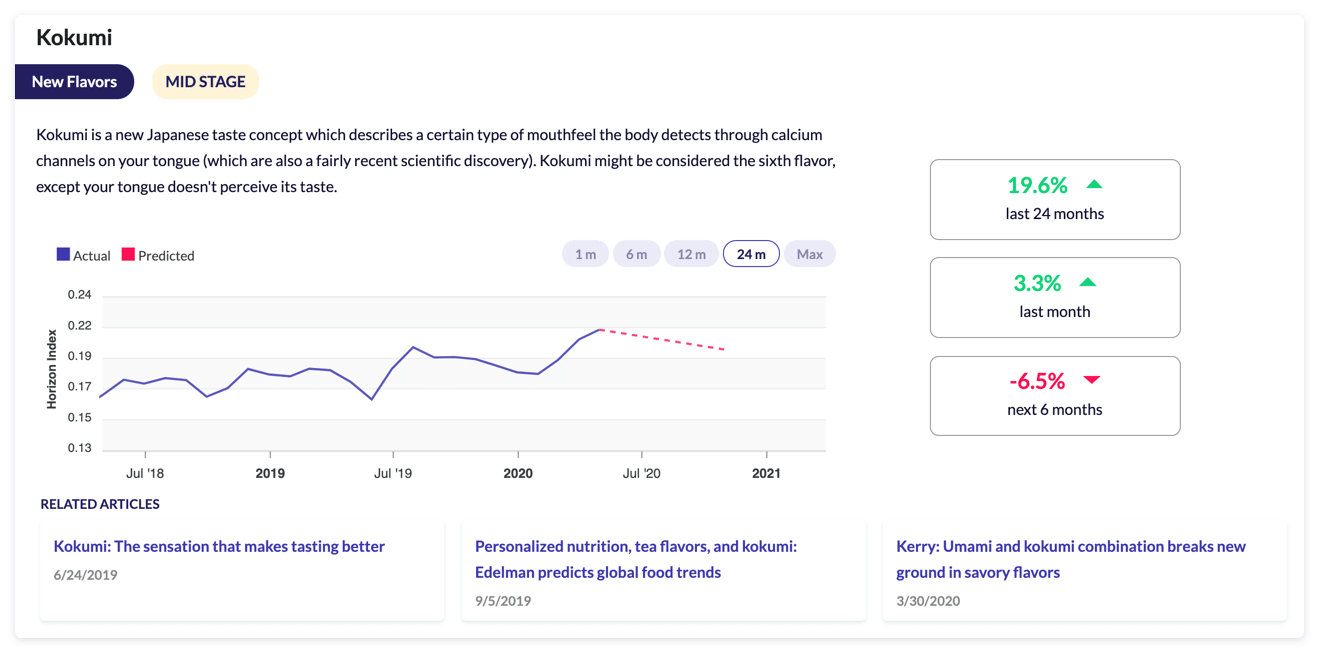Our methodology
At Spoonshot, we are building a next-generation research tool that can transform food innovation by
combining artificial intelligence and fundamental sciences. We have developed technology that processes
large volumes of unstructured data, weaving together seemingly disparate information to uncover
hidden relationships and opportunities.
How do we predict the next innovation opportunity
Spoonshot’s AI, #foodbrain, mines through billions of data points across
2,900+
diverse long-tail sources and dives into the wealth of food and beverage information spanning
consumer, business, institutional data. Based on this data, we separate isolated patterns from
underlying cultural movements and analyze the signals. We constantly track these signals and
identify how they evolve in real-time. Because these long-tail data sources are all vetted,
you can be assured of their authenticity.
We try to answer the ‘why’ behind any innovation opportunity that we find. Any long-lasting trend is usually driven or influenced by a bigger macro or megatrend.
We try to answer the ‘why’ behind any innovation opportunity that we find. Any long-lasting trend is usually driven or influenced by a bigger macro or megatrend.
Example
A plant-based snack brand that wanted to create a line extension of their healthy snacks with cassava
root. We first looked at emerging ethnic flavors and trends to then derive an innovative solution that
would fit their requirements. We found that North African flavors had taken the cuisine world by storm
over the past year. The North African condiment, harissa, a zesty red pepper sauce with subtle notes
of sweet tomato emerged as a top trending condiment. Since 2018, African flavors, in general, have
seen a 19.6% increase in conversations and in usage.
When we combed through ingredients that share high flavor compatibility with harissa and connected the data from 996 recipes and news sites, our #foodbrain came up with a unique and tasty pairing for harissa... lemon.
Our data also suggested that cassava goes well with chili flavors like paprika so it too would combine well with harissa. Harissa is used in a host of products and recipes – from harissa sweet potato wedges to Moroccan harissa grilled chicken legs. Of all the popular African sauces used in recipes (chermoula, harissa, maafe, moambe, and shito), harissa comprises 77%.
Examples of harissa flavored snacks include President’s Choice Harissa Hummus Flavor Rippled Potato Chips and TaDah! Falafel Wrap With Sweet and Spicy Harissa.
When we combed through ingredients that share high flavor compatibility with harissa and connected the data from 996 recipes and news sites, our #foodbrain came up with a unique and tasty pairing for harissa... lemon.
Our data also suggested that cassava goes well with chili flavors like paprika so it too would combine well with harissa. Harissa is used in a host of products and recipes – from harissa sweet potato wedges to Moroccan harissa grilled chicken legs. Of all the popular African sauces used in recipes (chermoula, harissa, maafe, moambe, and shito), harissa comprises 77%.
Examples of harissa flavored snacks include President’s Choice Harissa Hummus Flavor Rippled Potato Chips and TaDah! Falafel Wrap With Sweet and Spicy Harissa.

We were, therefore, able to provide the snacks brand with not just a new trending flavor
combination, but insights on the next ethnic condiment that could potentially surpass sriracha
in popularity.













